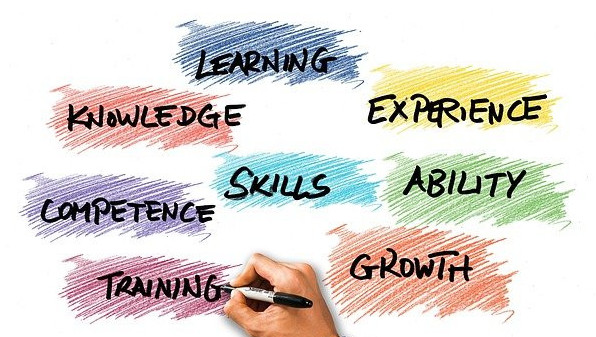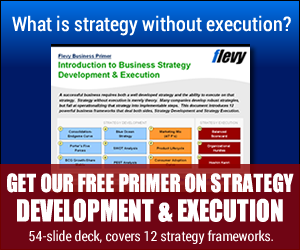Every organization possesses core capabilities. Those ‘human’ capabilities can be captured and managed through a Universal Competency Framework. That means an organized product that incorporates capabilities that are core to the organization’s mission – PM and otherwise. Let’s take a look at the nuts and bolts.
Let’s Define Competency Framework
 A Competency Framework is a tool used to clearly identify and codify the knowledge, skills, and attributes necessary to effectively execute jobs in an organization.
A Competency Framework is a tool used to clearly identify and codify the knowledge, skills, and attributes necessary to effectively execute jobs in an organization.
A Competency Framework consists of the kinds of competencies required in the organization, from the general and overarching to the more specific. The triangle diagram here shows an approach that groups knowledge, skills, and attributes into three broad areas:
- Core values
- Core competencies
- Functional (or technical) competencies
The key to an effective framework is to make competency levels measurable. This can:
- Create a company-wide standardized performance approach
- Establish a talent management baseline
- Promote career progression
- Integrate human resources and talent management
In addition to measurability, the other challenge worth pursuing to take as holistic and approach as possible, which enumerating knowledge, skills, and attributes will do.
Here are some organizational benefits to develop g a Competency Framework:
- Provide employees with guidance on the who they need to become to achieve their personal goals within the organization
- Ensure the organization that employees have the capabilities required to perform the work
- Provide a head start in employee recruitment efforts by defining the type of person needed
- Guides policies within the company, sometimes of human resources’ nature, but more often of management, that shape the workplace and will play a role in retaining employees
- Provides input for considering what training needs exist within the organization to reduce skill gaps
- Improves performance overall, but especially in relationship to strategic goals and objectives
- Help to implement change initiatives that produce growth, succession, or expansion more effectively
Indeed, three of the elements of the McKinsey 7S framework model – skills, staff, and style – can be enhanced by an effective Competency Framework.
Similarly, many elements of the Nadler Tushman Congruence Model can also be positively effected by a Competency Framework.
Effective Approaches to Building an Effective Competency Framework
 A Competency Framework is an essentially Human Resources (HR) function. However, it is best executed in collaboration with people throughout the organization.
A Competency Framework is an essentially Human Resources (HR) function. However, it is best executed in collaboration with people throughout the organization.
The final product should include:
- Grouping of roles – Key roles or positions that support core capabilities within the organization
- Competencies – A list and short description detailing specific knowledge, skill, and attributes
- Matrix of roles and competencies – Grid mapping the roles to the competencies
Accomplishing this can be a large task, depending upon the size and complexity of the organization. It starts with planning and organizing, and determining what internal as well as external support are needed.
- Internal support – What level of input or participation will employees need to provide? What positions are in scope for the framework?
- External support – What surveys, external expertise, templates, or other outside resources will be needed? Lucid Software (paid link) is one such resource.
Often it will be effective to start with a baseline of a generic Competency Framework and then customize it with detail from the organization. This customization process happens through extensive information gathering efforts:
- Observing – What tasks do employees perform? What challenges do they face? Observing multiple people performing their jobs is the best way to do this.
- Interviewing – Next is interviewing individuals, or holding group discussions, based on structured questions around the topic of what it takes to be successful at the job.
- Surveying – Structured questions, with allowance for open-ended answers, can allow collection of data consistently, and from a large sampling of people that might not be accessible in person.
- Analyzing – Comparing, organizing, and analyzing the data from the different sources provides
Building a useful Competency Framework is a major project!
Strategy and Competency Frameworks
A Competency Framework helps support execution; without the skills and attributes assembled into a core set of capabilities, there is no ability to execute.
—————————————-
I recommend these strategy resources (paid link):
—————————————-
Rather than thinking outwardly, some more ‘inward’ strategic thinking can be effective when thinking in terms of competencies. What competency strengths do we have? What competency strengths do we need? What timetable? How can we get there?
Synchronizing the answers to those questions with the overall strategy is where strategy and Competency Frameworks intersect.
There are some useful strategic frameworks out there for thinking in this realm:
- 7S Framework – Skills, staff, and style – essentially competencies – are among the 7 elements of the McKinsey 7S Framework Model.
- Congruence models – The Nadler Tushman Congruence Model frames the transformation of inputs into outputs through a synchronized – or congruent – processes around work, culture, structure, and people, as of which related closely to competencies within the organization.
- Objectives and Key Results (OKR) – This provides a great framework for implementing, in practical, hand-on, oriented terms, linking competencies and measurable results.
Thinking about competencies forces strategic thinkers to reckon with the human resources side of execution challenges.
Project Management and Competency Frameworks
Project management fits naturally with the concept of competencies because, like a Competency Framework, it is execution oriented.
—————————————-
I recommend these PM templates (paid link):

—————————————-
Here are some questions to consider from a PM perspective:
Do the objectives of the project align with the organization’s overall human resource capabilities?
This is a good question to answer in the project charter, at least at a high level.
Do project teams have the right combination of talent to execute and deliver the project successfully?
This relates to talent pool for the project team as well as the stakeholders. Certain knowledge, skills, and attributes need to be covered somewhere in the project ecosystem.
Does the organization have the talent – in breadth and depth – to access and sustain the products of projects, after delivery?
When the project is finished, something needs to be sustained in order to realize the value. Thinking that through up front ensures that the evaluation, cost, and challenges of doing that have been considered.
In addition to these questions, the field of project management itself is subject of Competency Frameworks.
- The Project Management Institute (PMI) developed a framework – see this “Project management competency development framework–second edition” (available to you even if you are not a PMI member). If you are a PMI member, you can find the latest edition at “Project Manager Competency Development Framework – Third Edition“.
- For good insights into these PM-centric frameworks and more, see “How To Develop a Project Manager Competency Framework” by Sean Whitaker, 2019.
Conclusion and Further Resources
For a brief 2-minute overview of Competency Frameworks, “Technical Competency Frameworks”, by Mentor Global Consultants, I recommend:
For a slightly longer – just 8 min – overview that enthusiastically gets into a little more depth, see “How To Develop A Competency Framework | A Beginners Guide”, by Segun Akiode.
